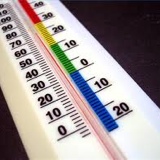Title Page
-
Audit Title
-
Client / Site
-
Conducted on
-
Prepared by
-
Personnel
General Comments
-
Safety & housekeeping audit summary:
General Safety & Housekeeping
General Housekeeping
-
Are offices and cubicle desk tops relatively clean and orderly?
-
Are all floors, aisles, and adjacent hallways unobstructed?
-
Are floors dry and free from slip or trip hazards?
-
Are bench tops and fume hoods reasonably well organized and clean?
-
Is machine guarding (rigid belt guard, housing, etc.) in place to protect employees from hazards caused by any moving machinery, belts, etc.?
-
Are employees wearing all required personal protective equipment for their lab work (lab coats, no open-toe footwear, gloves, safety glasses with side shields, goggles, and/or face shields?
Elevated Work
-
Have all ladders received documented inspections each month?
-
Are employees who are on elevated work platforms >4' protected from fall hazards?
Chemical Hygiene Plan
Chemical Storage
-
Are all food and drink products stored and consumed away from toxic and infectious materials?
-
Are all refrigerators and freezers properly labeled either "Food and Drink Only" or "No Food and Drink"?
-
Are incompatible materials properly segregated (acids/bases, flammables/oxidizers, etc.)?
-
Are chemical containers in good condition and kept closed (except when they are in use)?
-
Are flammable liquids (including flammable wastes) stored in flammable liquid storage cabinets? (NOTE: Up to 10 gallons per control area - NOT individual lab - may be stored outside of the cabinets)
-
Are refrigerated flammables placed in explosion proof or flammable refrigerators only?
-
Are all hazardous materials kept away from sinks or drains unless secondary containment is provided?
-
Has storage of hazardous chemicals in the fume hood been minimized?
-
Are fume hoods providing good negative pressure, and are their annual inspections current?
Hygiene Plan
-
Are Safety Data Sheet (SDS) documents available for all lab chemicals, a chemical inventory list available, and do employees know where to find them?
-
Are all hazardous materials and oil pumps stored in secondary containment and free of spilled materials or residue?
-
Do all lab practices minimize the potential for volatilization (eg. traps used, open container procedures minimized, etc.)?
Chemical Waste
-
Is the "Chemical Waste Compliance" poster clearly displayed in labs where hazardous waste is accumulated?
-
Have weekly waste storage areas received documented inspections?
-
Are all hazardous wastes collected in compatible containers with completed waste tags?
-
Are hazardous wastes kept for no longer than 9 months from the accumulation date on the waste tag?
-
Are waste containers in good condition and kept closed (except when they are in use), with no open funnels?
-
Are biohazard wastes placed in red bags with proper signage?
-
Are red biohazard bags stored in hard-sided closed secondary containment (which has biohazard symbols on all four sides and the top)?
-
Are "sharps" materials being handled and disposed of properly?
Compressed Gas Cylinders
-
Are compressed gas cylinders protected from external heat sources or physical damage and stored in well ventilated and dry locations?
-
Are gas cylinders secured to a rigid structural component of the building with chains, straps, or equivalent materials?
-
Are protective caps in place on all cylinders which are not currently in use or connected for use?
-
Are gas detectors present if flammable gasses could build up without detection by normal human senses?
Electrical Safety
-
Are all extension cords and power strips being used properly (no "daisy chaining", temporary cords being used in a permanent way, or overloaded circuits)?
-
Are all cords in good working order (no exposed wires, cut insulation, or missing ground prongs)?
-
Have all high voltage (>600 volt) pieces of equipment been labeled, grounded, and insulated properly?
-
Has equipment been properly de-energized prior to maintainence or repair activities?
Fire Safety
-
Are appropriate fire extinguishers mounted within 75' of all work areas?
-
Have all fire extinguishers received documented monthly inspections from facility personnel and annual inspections from a qualified 3rd party inspector?
-
Are the areas around fire extinguishers and pull alarms clearly visible and free from obstructions?
-
Do all sprinkler heads have at least 18" of vertical clearance?
Emergency Action Plan
Earthquake Safety
-
Do all shelves have lips or seismic restraints?
-
Are all free-standing cabinets, furniture, or equipment (greater than 4' tall) braced or anchored against unintended movement?
-
Are any cabinets or bookshelves secured to the walls?
-
Has overhead storage been minimized and restrained from falling?
Emergency Action Plan
-
Are postings marked, "In Case of Emergency" or "Emergency Procedures" in place and current?
-
Are emergency contacts, chemical storage maps, and chemical inventory lists stored in a secure location (eg. server drive) and kept current?
-
Are hazardous material spill clean-up kits available and well stocked?
-
Have employees received documented spill clean-up procedure training?
-
Are disaster and fire prevention plans available to all employees?
-
Are first aid materials kept in adequate supply and made readily available?
-
Are emergency exit pathways clearly marked and free from obstructions?
-
Has at least one employee been trained in first aid - or are emergency medical services less than four minutes away?
Auditor Signature
-
Auditor's name & Signature














